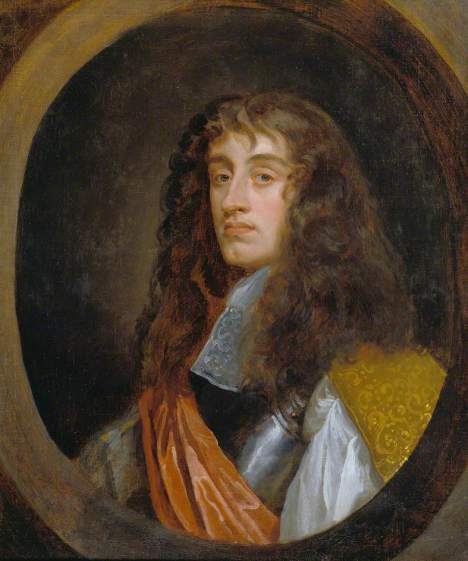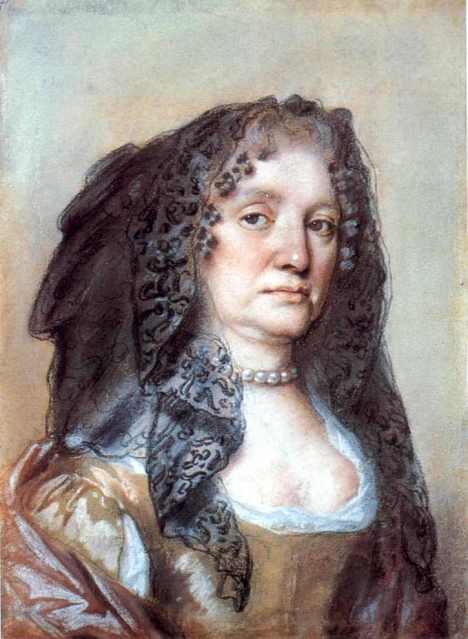We’ve all heard of Sir Peter Lely, celebrated court painter to Charles II, and one of the most famous artists of the 17th century, but who has heard of his pupil, John Greenhill? I hadn’t, but after a little research I think he’s worthy of a discussion.
Here he is, in a self-portrait from late 1660s/early 1670s.

Born in Salisbury sometime in the 1640s – source dates differ from 1642 to 1649 – he was the eldest son of John Greenhill, the registrar of the diocese of Salisbury, and Penelope Champneys of Orchardleigh, Somerset. Through his paternal uncles he was connected to the East India trade.
Greenhill came to London in around 1662 and began work as Lely’s pupil. He is said to have been a fast and talented student, learning much of Lely’s style and skill, with one commentator claiming his copy of Van Dyck’s portrait of “Thomas Killigrew and his dog” was so good it was hard to distinguish from the original, making his master jealous.
Although he began his career with such promise, and took a wife, the talented painter became very fond of the theatre, poetry and dramatic entertainment, gaining him a reputation for ‘irregular habits’. He died tragically young, either in his late 20s or early 30s, after stumbling home drunk from the theatre. Falling into the gutter he was helped home, but did not survive the night.
I can’t help noticing that Greenhill’s life holds a curious parallel with that of his predecessor some 20 years before. As court painter to the previous king, William Dobson was said to have had similiarly ‘dissolute’ habits while enjoying a privileged lifestyle in Oxford, and would also die young after returning to London, his true potential lost.
Greenhill’s artistic style shows the clear training and influence of Sir Peter, and one can see how, had he lived longer and developed his art further, he could certainly have approached his master’s quality.
Here are some more of his works:

Seth Ward, Bishop of Exeter and Salisbury, c. 1673/4, © The Royal Society

John Clements, 1673, ©National Maritime Museum, Greenwich

Portrait of a Lady as a Shepherdess, c. 1665, ©Dulwich Picture Gallery

James II as Duke of York, c. 1660, ©Dulwich Picture Gallery

Henry Fermor, date and location unknown

Lady Twisden, 1676, (pastel) ©British Museum

dépaysement
/ June 23, 2017Damn, what a waste. All that talent and skill and he throws his life away boozing.
LikeLike
rfjblog
/ June 23, 2017Indeed. 😦 It would seem the lifestyle was too tempting for him. I love the lady in pastel. It’s not often you see them in this period, with most works being oil on canvas.
LikeLike
C McGinn
/ February 23, 2018I cannot find the name of his wife, or anything about his children anywhere. Can anyone help, please.
LikeLike
dépaysement
/ February 23, 2018I’m not seeing any references to him having married at all!
LikeLike
rfjblog
/ February 23, 2018I’ve not found anything either, I’m afraid. Most of what I found on him came originally from the DNB, and other than that he certainly did marry, I couldn’t track down any further information on his family. other than that Lely may have painted his wife at some point. If I uncover anything else, I’ll let you know!
LikeLike
C McGinn
/ February 24, 2018Thanks for looking. Maybe there is a will
LikeLike